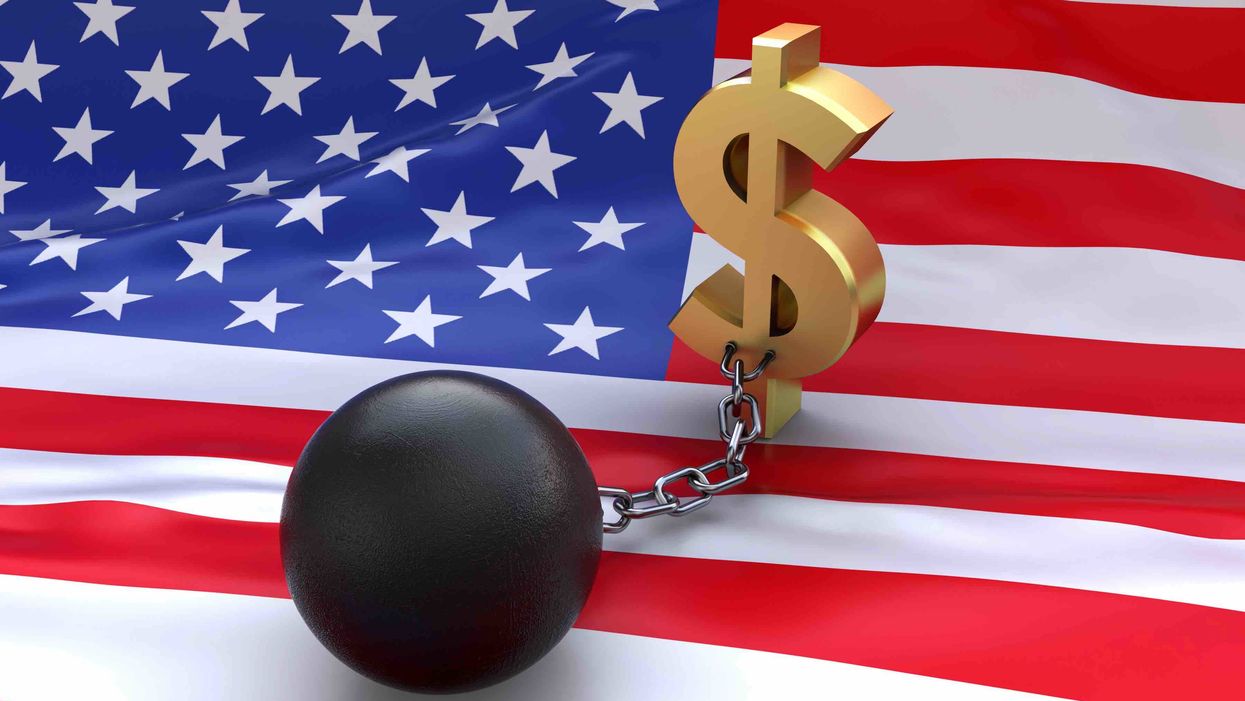
devke/iStock/Getty Images Plus

"A strong economy is one key to debt reduction, but spending restraint is a necessary component that must be vigorously pursued."
Those are the words of the Republican Party platform adopted at the 2016 convention. Nearly three years later, following two years of GOP trifecta control of the House, Senate, and White House, spending for the first six months of this fiscal year is 13.7 percent higher than during former President Barack Obama's final year.
Despite the best job market in decades, the debt under GOP control has surged even higher than under Obama, putting to rest the notion that a good economy can grow its way out of a spending binge this deep. Excessive government spending inhibits economic growth.
On Friday, the Congressional Budget Office released its monthly budget review for March, which also tallied the spending and debt figures for the first half of fiscal year 2019. Despite a 1 percent increase in revenue, the deficit for just the first six months of this fiscal year is $693 billion, $94 billion more than this time last year. That is because spending has increased by 5 percent over last year.
In just the first half of the year, our government has spent $2.2 trillion, 13.7 percent more than the first half of FY 2016, the final year of Obama's presidency, when Republicans were railing against the unconscionable rise in debt. The gross national debt is now $2.6 trillion higher than when the GOP drafted its new platform. More importantly, roughly 86 percent of that $2.6 trillion increase is composed of the public debt, not the so-called intra-governmental debt from Social Security (the money we "owe ourselves").
While corporate tax revenue was down due to the tax cuts, payroll tax revenue rose by 4.7 percent, which more than offset the loss of revenue from corporate and individual income taxes. This lends credence to the notion that the tax cuts helped fuel job gains, resulting in higher payroll tax revenue, even as income tax rates dropped. Lower taxes and more people working should be a recipe for debt reduction. But spending has increased at such a quick pace that even record revenue fails to even slow down the deficit.
The fastest-growing expenditure is ironically the interest on the debt itself, which rose 13 percent over this time last year.
The increase in interest and debt might also be the culprit behind the relatively modest economic gains compared to the roaring job market. GDP growth seems to be hovering just below 3 percent and is not climbing to 4 percent. There are also numerous signs that the economy is slowing, as the Federal Reserve is warning.
As interest rates are pushed higher, more private money is used to purchase higher-interest Treasury securities rather than invest in capital goods, such as factories and plants. The more government is desperate to service this debt, the more it will drive up interest rates, which in turn will divert and misallocate more investors into Treasury bonds. This further makes interest on the debt even more expensive, constantly reinforcing itself in a vicious cycle of debt and higher rates.
In absolute dollars, $2.2 trillion is the most we've ever spent for the first six months of a fiscal year, and adjusted for inflation, it is roughly on par with what we spent during the first six months of 2009. That was at the pit of the Great Recession and included Obama's massive spending binge, unemployment benefits, and a surge in welfare spending. It's truly unprecedented to be racking up such high levels of spending and debt during a period of 3.8 percent unemployment.
The unemployment rate has been below 4 percent for a full year and below 5 percent for three years. The only comparable periods of such low unemployment were during the late 1990s and late 1960s. During the late 1960s, there were years of growth over 6 percent. Likewise, from 1997 to 2000, our economy experienced 4 percent growth or higher during four consecutive years. We have not experienced 4 percent growth since 2000 or 3 percent growth for a full calendar year since 2005, although we just barely missed it in 2018.
Clearly, the misallocation of resources to service debt and the market distortions inherent in the government programs supported by that debt serve as an albatross of dead weight on our economy. It's why it is likely we will never experience 4 percent annual growth so long as the debt and market distortions remain in place. We no longer have a free market economy, even during periods of relative prosperity.
In 2016, the Republican platform stated, "Our national debt is a burden on our economy and families" and that Obama's spending binge "has placed a significant burden on future generations." It promised to "impose firm caps on future debt, accelerate the repayment of the trillions we now owe in order to reaffirm our principles of responsible and limited government, and remove the burdens we are placing on future generations."
Truer words never spoken. Falser actions never taken.
Daniel Horowitz
Blaze Podcast Host